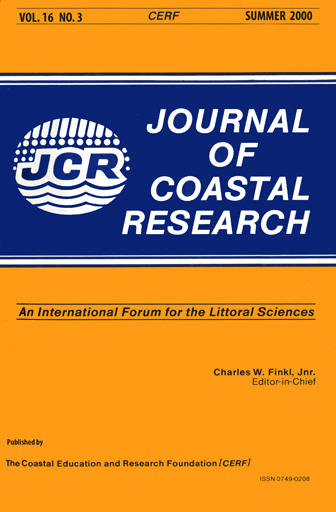A Whole Surf Zone Modelling Approach as an Aid to Investigation of Nearshore and Coastal Morphodynamics
Keywords:
Wave characteristics, nearshore topography, beach dynamics, numerical modelAbstract
Studies of the theoretical relationships between wave characteristics, nearshore topography and beach dynamics are common in coastal engineering and coastal geomorphology studies. Frequently, these studies use spatially averaged values of dynamic variables (waves, tides) and spatially-averaged nearshore topography. Such an approach reduces the accuracy and introduces errors when the relationships between variables are considered. High-resolution surf-zone input and output which are needed to simulate the complex relationships between waves, tides, winds and sediments for both modal and high energy/low frequency events can, however, be achieved by adapting and extending existing approaches.
This paper introduces a method to investigate and characterise wave-induced processes using a whole-surf-zone approach (i.e. an integrated rather than an averaged approach) and produce useful output for geomorphological interpretation of beach morphodynamics.
This involves the following steps: (i) Extraction of spatially-referenced hydrodynamic data from a 2-D numerical wave propagation model. The geographical and hydrodynamic data is then written to a secondary file. (ii) Creation of a surf-zone map and hydrodynamic database. (iii) Calculation of (a) local slopes within the surf-zone to characterize nearshore processes and (b) average slopes for application of beach classification formulae (e.g. surf scaling parameter). (iv) Calculation of nearshore parameters (e.g. potential currents, sediment transport, wave setup etc). (v) Extraction of G.I.S. compatible output for further analyses.
This approach, while still a simplification of surf-zone processes, avoids the surf-zone averaging or single-point data limitations inherent in earlier approaches and offers the opportunity for more robust and detailed investigations of nearshore processes. It also avoids the bathymetric updating of other models, which tend to multiply errors.
Several examples are discussed in which the use of this approach as an aid to morphodynamic interpretation has been demonstrated. The approach is presented as an aid to interpretation of field observations through simulation of relevant morphodynamic parameters which would be difficult to obtain through field measurement.


